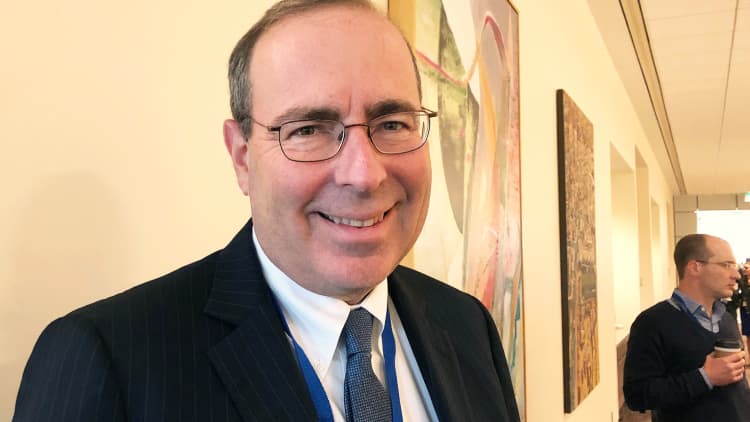
Richmond Federal Reserve President Thomas Barkin told CNBC that he still doesn't expect negative interest rates to become official policy, even as markets pulled the central bank in that direction.
Traders on Thursday priced in a negative federal funds rate by December 2020, lasting at least to January 2022, amid expectations that the central bank would need to keep its policy rate that banks charge each other for overnight lending around the zero level it is now.
The May contract for the funds rate still traded at 0.525%, near the bottom of the 0%-0.25% range where the Fed is targeting the benchmark, but futures contracts are drifting progressively lower. Fed officials repeatedly have pushed back against the notion of rates anywhere on the curve going negative, though markets seem to disagree.
"I think negative interest rates have been tried in other places, and I haven't seen anything personally that makes me think they're worth a try here," Barkin said on CNBC's "Closing Bell."
Rates on government debt in Germany, France and other parts of Europe are negative, as is the case in Japan.
Short-duration U.S. Treasury yields at the have drifted into negative territory at various times in recent months and the two-year note fell to its lowest on record in Thursday trading, most recently around 0.1%.
The economy is currently mired in an unprecedented downturn brought about by efforts to stem the coronavirus spread. The White House and some Fed officials have said they expect a sharp recovery once the economy is brought back online, but 33.5 million jobless claims and an unemployment rate likely to go well past 15% suggest the bounce could be slower to happen.
Barkin said the economy "is about as low as it's going to go."
"I think the comeback is going to be slower," he added. "That does mean we're going to have individuals and small businesses in need of help. What we're going to do about it, I'd turn that back to the Congress."
The Fed has taken historically aggressive measures to keep the economy and markets afloat. In addition to pulling its benchmark interest rate to near zero, the central bank has instituted a variety of lending and liquidity programs aimed at maintaining market function and making sure money is flowing to businesses and individuals where needed.
Barkin said he would be open to the Fed doing more but only if it had a clear benefit.
"For me, my hurdle is, can we have a positive impact within the scope of our legislative mandate," he said. "If we can, I'd like to do that."
Correction: Earlier versions misspelled Barkin's last name.


